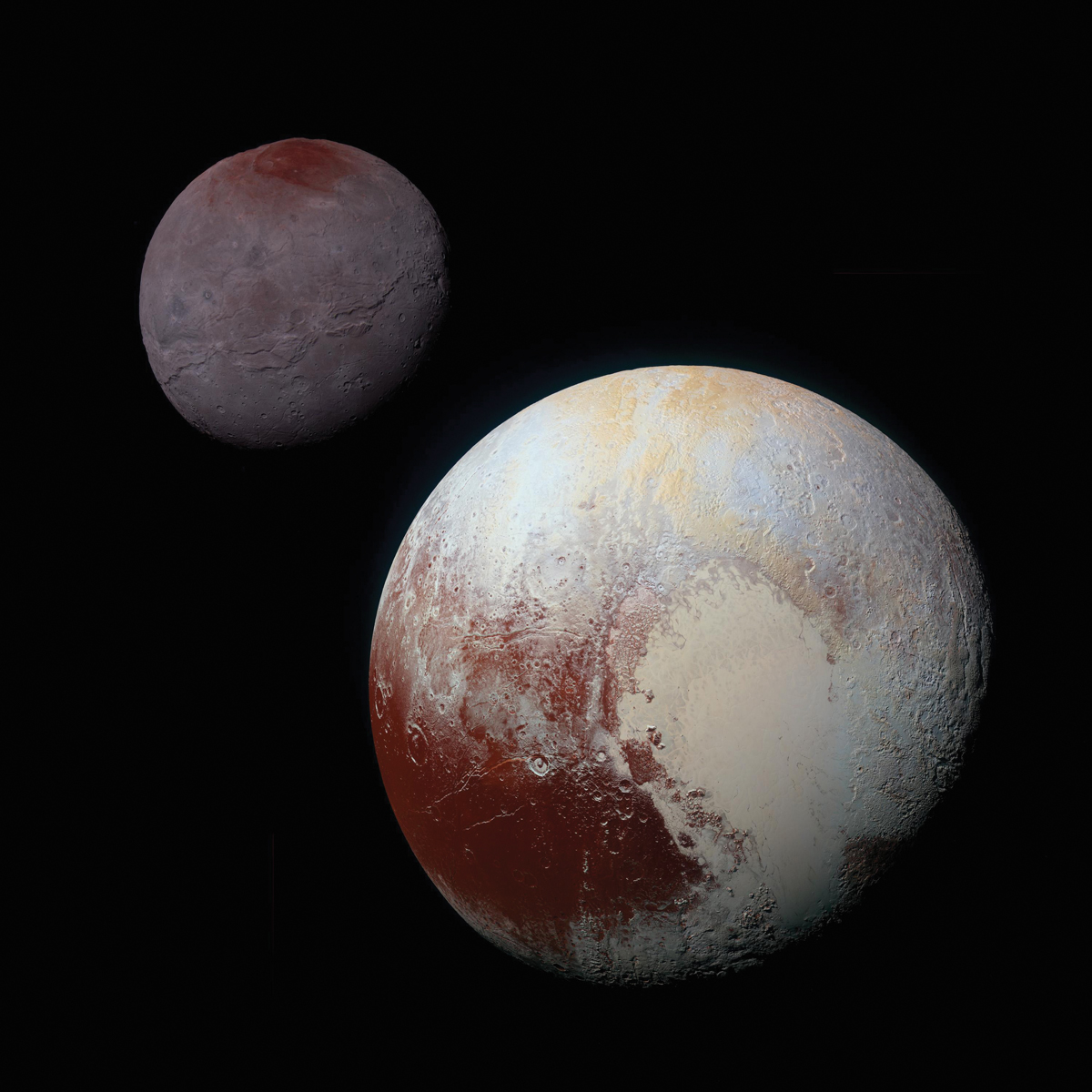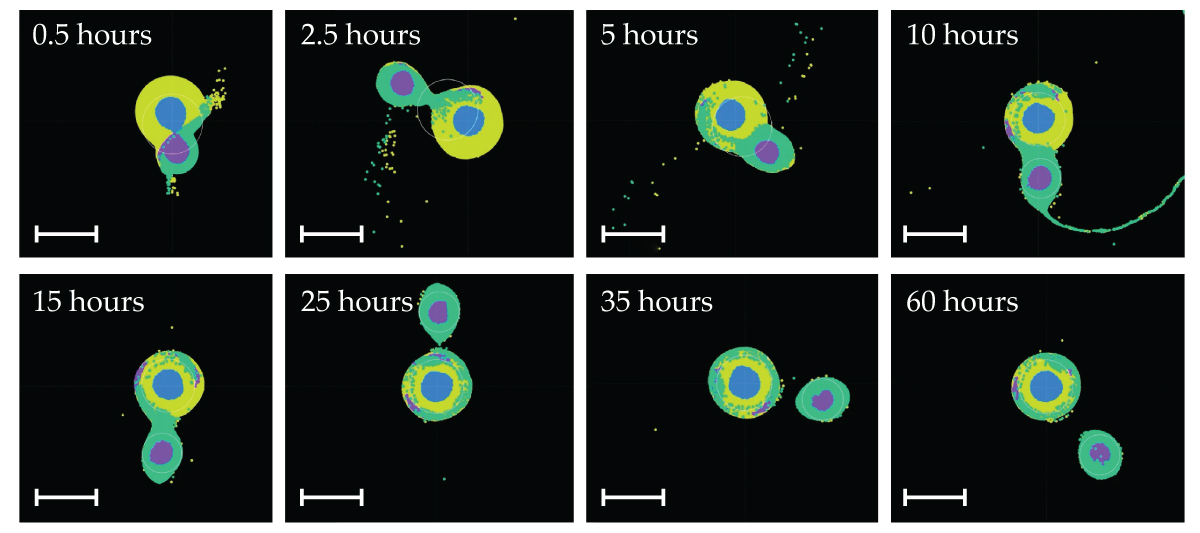How Pluto got its biggest satellite
DOI: 10.1063/pt.ufvv.jphw

Pluto (lower right) and Charon (upper left) are shown in a composite, enhanced-color image taken by NASA’s New Horizons spacecraft. The bodies’ relative sizes are approximately to scale; the distance between them is not. (Image by NASA/Johns Hopkins University Applied Physics Laboratory/Southwest Research Institute.)

At about one-eighth the mass of Pluto, Charon is a satellite unusually close in mass to the body it orbits. Since the 1980s, astronomers have inferred that the binary system formed following the collision of two proto-bodies. Simulations of the system predicted a formation scenario in which proto-Charon grazed proto-Pluto, and the system lost enough angular momentum to match its current state.
Those simulations, however, treated the colliding objects as fluids. C. Adeene Denton of the University of Arizona wondered whether that was a reasonable assumption, considering that the proto-bodies that formed the Pluto–Charon system were smaller and not traveling as fast as other modeled impactors.
When Denton and her collaborators ran new simulations that factored in the material properties of the proto-bodies’ ice and rock, the colliding bodies deformed less than they did in the fluid simulations. Grazing collisions became hit-and-run events where Charon escaped the system entirely. The simulations indicate that to match current observations of the binary system, proto-Charon would have had to hit proto-Pluto at an almost 45° angle and slightly penetrate Pluto’s interior. Within about 60 hours, Charon would have been pushed away by the angular momentum of Pluto and captured into a close orbit.

In a simulated case of kiss and capture, Charon (green and purple object) and Pluto (yellow and blue) exchange material following a collision, and the angular momentum of Pluto forces Charon away. The scale bar represents 2000 km. (Figure adapted from C. A. Denton et al., Nat. Geosci. 18, 37, 2025

Denton and her team have dubbed the interaction “kiss and capture.” The formation scenario may help explain when and how Pluto developed a subsurface ocean, evidence for which has been provided by observations of Pluto’s surface from NASA’s New Horizons and other missions. Tidal forces exerted on Pluto by Charon as it retreated from its close post-capture orbit could have been the source of the heat that melted the ice and formed the ancient ocean. Data from a future orbiter mission could provide the detailed understanding of Pluto’s interior needed to support the scenario suggested by the modeling.
The Kuiper belt contains other bodies in binary systems with masses that are within a few orders of magnitude of Pluto and Charon’s. Although no known ones have mass ratios like Pluto and Charon’s, some scientists have suggested that the binaries share a common formation history. Denton says she suspects that the kiss-and-capture regime may prove to be a better fit for their formation than previous theories. (C. A. Denton et al., Nat. Geosci. 18, 37, 2025
This article was originally published online on 31 January 2025.
